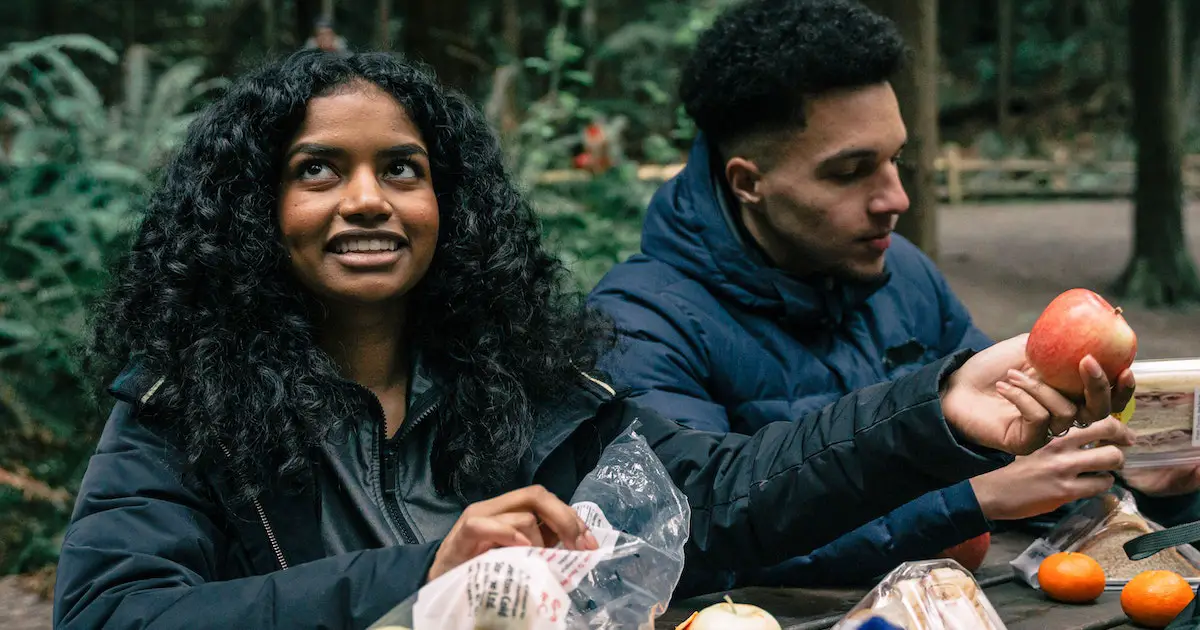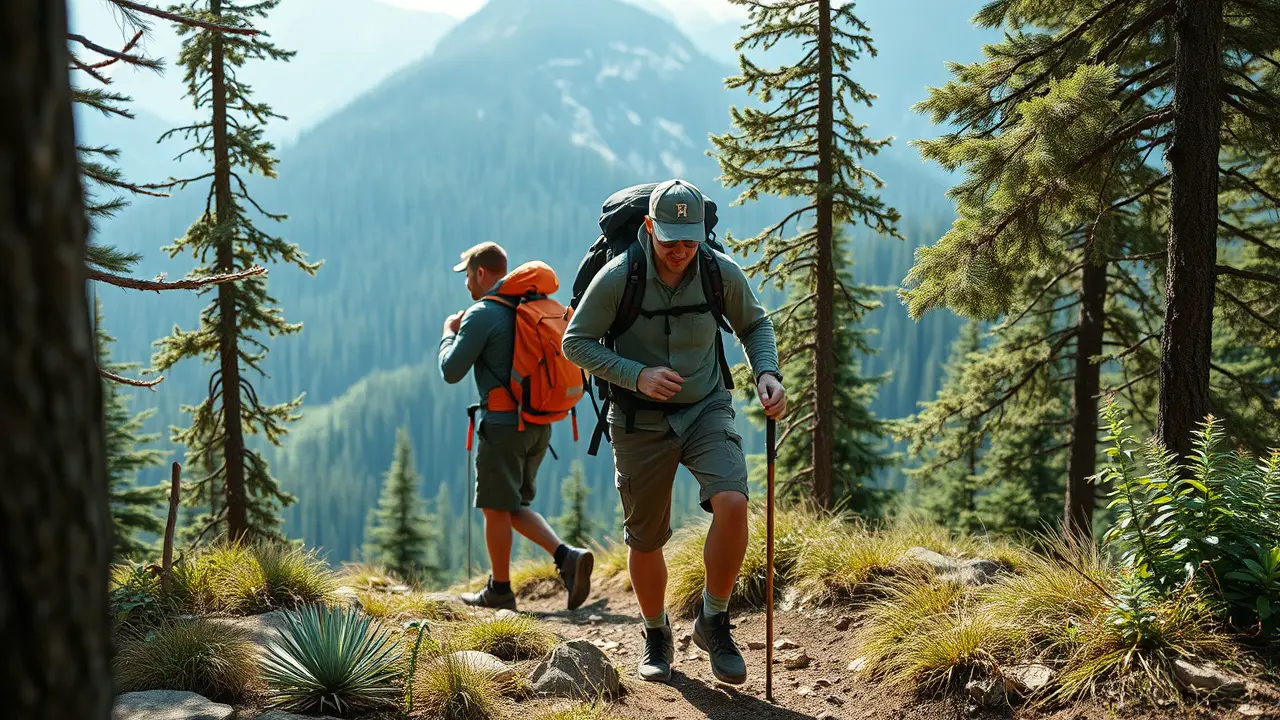Discover the world of stove-free backpacking meals and learn how to enjoy delicious food on your outdoor adventures without the need for a stove. Backpacking food no stove is one of th
Backpacking food no stove, this is a backpacking free without the need of carrying a stove, by so doing the total load weight of your backpack reduced, with lot and lot of preserved food this days, this become achievable.
Contents
Whether you’re embarking on long trips in the backcountry or simply looking for a convenient way to fuel yourself while camping.
Stove-free backpacking meals offer a practical solution.
By utilizing dehydrated food, you can pack light and still enjoy nourishing meals on the go. Now backpacking food no stove make things even more easier.
This blog post will explore alternative options for cooking-free backpacking meals, including techniques such as soaking and using a dehydrator.
So grab your backpack, spoon, and tent, and get ready to savor tasty meals without the hassle of a stove.
Backpacking food no stove is very much available in many shopping mall so go grab some.
Backpacking Food No Stove
When you’re out in the wilderness, sometimes it’s just easier and more convenient to leave the stove behind. Going stove-free can have its advantages:
- Lightweight: Without a stove and fuel, your backpack will be lighter, allowing you to move faster and cover more ground.
- Simplicity: No need to worry about setting up and operating a stove. With no cooking involved, meal prep becomes hassle-free.
- Versatility: Going stove-free opens up a world of food options that don’t require cooking. You can get creative with your meals using simple ingredients.
Benefits of Choosing No-Stove Meals
Backpacking food no stove meals offers several benefits for your outdoor adventures:
- Convenience: No-stove meals are ready-to-eat or require minimal preparation, saving you time and effort.
- Energy Efficiency: Cold-soaking or rehydrating dehydrated meals conserves energy since you don’t have to heat water.
- Extended Shelf Life: Many no-stove meal options have a longer shelf life compared to perishable foods, making them ideal for longer trips.
Types of Foods That Can Be Enjoyed Without a Stove
There is an array of delicious options when it comes to backpacking food no stove meals:
- Snack Foods: Nuts, dried fruits, granola bars, beef jerky, and trail mix provide quick energy boosts on the go.
- Cold Soak Meals: These are meals that require soaking in cold water until they soften or rehydrate. Examples include instant oats, ramen noodles, couscous salads, and pasta salads.
- Ready-to-Eat Meals: Pre-packaged options like tuna pouches, canned beans or vegetables, pre-cooked rice packets, tortillas with spreads or fillings, and meal replacement bars can be enjoyed without any cooking.
- Fresh Foods: Some foods don’t require cooking but still offer nutritional value. These include fresh fruits, vegetables, hard cheeses, cured meats, and bread.
By going stove-free on your backpacking trips, you can enjoy the benefits of simplicity, versatility, and convenience while savoring a variety of no-stove meal options.

No-Cook Meal Ideas: Wraps, Burritos, and Sandwiches
If you’re planning a backpacking trip and don’t have access to a stove, no worries!
There are plenty of delicious backpacking food no stove meal ideas that require no cooking at all.
Let’s explore some easy-to-make wrap recipes, along with creative ways to prepare burritos and sandwiches without using any heat source.
Now we can achieve backpacking food no stove meals easily.
Easy-to-Make Wrap Recipes
Wraps are a fantastic option for stoveless backpacking lunches because they are portable, customizable, and don’t require any cooking.
Here are some ideas to get you inspired:
- Veggie Delight: Fill your wrap with fresh vegetables like lettuce, tomatoes, cucumbers, and bell peppers. Add some hummus or avocado for extra flavor.
- Greek-inspired: Use feta cheese, olives, cucumber slices, and tzatziki sauce for a Mediterranean twist.
- Protein-packed: Load up your wrap with sliced turkey or chicken breast, cheese, spinach leaves, and your favorite condiments.
Creative Burrito Fillings
Burritos can be just as satisfying without the need for a stove. Here are some creative filling ideas:
- Breakfast Burrito: Fill your tortilla with scrambled eggs (pre-cooked), cheese, salsa or hot sauce, and avocado.
- Tex-Mex Style: Combine black beans (canned or pre-cooked), corn kernels (also canned), diced tomatoes or salsa, shredded cheese, and cilantro.
Delicious Stoveless Sandwiches
Sandwiches are classic lunch options that work well for backpacking trips too. Try these variations:
- Caprese Sandwich: Layer sliced mozzarella cheese with fresh basil leaves and tomato slices. Drizzle with olive oil and balsamic vinegar.
- Peanut Butter Banana: Spread peanut butter on bread slices and add sliced bananas for a quick energy boost.
Remember, when backpacking without a stove, it’s important to choose ingredients that don’t require refrigeration and will stay fresh throughout your trip.
Opt for condiments in single-serving packets and consider using tortillas or wraps instead of bread to reduce the risk of squished sandwiches.
So, get creative with your no-cook meals and enjoy delicious wraps, burritos, and sandwiches on your next backpacking adventure!

Nutritious Salads for the Trail: Quinoa and Bean Options
For a hearty and nutritious meal on the trail, consider creating salads using quinoa as a base ingredient.
Quinoa is a grain-like seed that is packed with protein, fiber, and essential nutrients.
Incorporating beans into your trail salads can further enhance their nutritional value by providing additional protein and fiber.
Create Nutritious Salads with Quinoa
Quinoa serves as an excellent base for salads due to its versatility and health benefits. Here’s how you can create delicious quinoa salads:
- Cook the quinoa according to package instructions.
- Allow the cooked quinoa to cool before adding it to your salad.
- Mix in your favorite vegetables such as cucumbers, tomatoes, bell peppers, or carrots.
- Add some protein-rich ingredients like diced tofu or grilled chicken for extra sustenance.
- Toss in some leafy greens like spinach or kale for added vitamins and minerals.
- Drizzle with a flavorful dressing of your choice, such as balsamic vinaigrette or lemon tahini.
Benefits of Beans in Trail Salads
Incorporating beans into your trail salads offers numerous benefits:
- Protein Powerhouse: Beans are an excellent plant-based source of protein, which helps repair muscles after long hikes.
- Fiber Boost: Beans are rich in dietary fiber that aids digestion and keeps you feeling full longer during your backpacking adventures.
- Variety of Options: Choose from a wide range of beans like black beans, chickpeas, kidney beans, or lentils to add texture and flavor to your salad.
Packing Salads Effectively for Long Hikes
To ensure that your salads stay fresh during long hikes or backpacking trips:
- Use sealable containers or resealable bags to prevent moisture from seeping in.
- Pack the dressing separately to avoid sogginess and mix it in when you’re ready to eat.
- Consider using lightweight, collapsible bowls or containers for easy packing and minimal weight.
By incorporating quinoa and beans into your trail salads, you can enjoy a nutritious and satisfying meal while exploring the great outdoors. So, pack those salads, hit the trails, and fuel your adventures with these healthy options!

Protein-Packed Snacks: Chicken Salad Packs and Smoked Sausage & Cheese
If you’re looking for convenient and protein-rich snacks to fuel your backpacking adventures, consider trying pre-packaged chicken salad packs or the delicious combination of smoked sausage and cheese.
These options are perfect for stoveless backpacking trips when you don’t have access to cooking equipment.
Pre-Packaged Chicken Salad Packs
Chicken salad packs are a convenient option that provides a good source of protein while on the trail.
They typically come in individual servings, making them easy to pack and eat on the go. Here’s why they make a great choice:
- Convenience: With pre-packaged chicken salad packs, you don’t need to worry about preparing or cooking anything. Just tear open the package and enjoy!
- Protein-rich: Chicken is a fantastic source of protein, which is essential for repairing muscles after a long day of hiking.
- Variety: These packs often come in different flavors like buffalo chicken or cranberry pecan, allowing you to switch things up during your trip.
Smoked Sausage & Cheese
Another tasty option for stoveless backpacking is the combination of smoked sausage and cheese. Here’s why it’s worth considering:
- Satisfying: The savory taste of smoked sausage paired with creamy cheese creates a satisfying snack that will keep you energized throughout your hike.
- Long shelf life: Both smoked sausage and hard cheeses have a longer shelf life compared to fresh meats and dairy products, making them ideal choices for extended backpacking trips.
- Easy pairing: You can enjoy smoked sausage and cheese with crackers, bread, or even by themselves.
There are plenty of options available:
- Tuna packets
- Salami or other cured meats
- Hard cheeses like cheddar or gouda
- Peanut butter or other nut butters
- Hummus and pita bread
These snacks provide a good balance of protein, fats, and carbohydrates to keep you fueled on the trail. Remember to pack enough food choices for your entire trip and consider any dietary restrictions or allergies.

Convenient Fuel for Hiking: Meal Replacement Bars and Protein Shakes
When you’re out on a long hike or trek, you need quick and convenient fuel to keep you going.
That’s where meal replacement bars and protein shakes come in handy.
These portable options provide the energy and nutrition you need without the need for a stove or elaborate cooking equipment.
Quick Energy with Meal Replacement Bars
Meal replacement bars are a great option for hikers looking for a quick and easy lunch on the go.
Packed with calories, protein, carbohydrates, and other essential nutrients, these bars offer a balanced meal in a compact form.
They come in various flavors and brands, so there’s something to suit every taste.
Pros:
- Convenient and easy to carry in your backpack
- No cooking required; simply unwrap and enjoy
- Provides a good mix of macronutrients like protein, carbohydrates, and fats
- Offers sustained energy throughout your hike
- Comes in different flavors to satisfy your cravings
Cons:
- Some meal replacement bars may contain high amounts of sugar or artificial ingredients, so it’s essential to read the labels carefully.
- May not provide the same satisfaction as a freshly cooked meal.
Portable Protein Shakes as Easy Fuel Source
Protein shakes are another excellent option for backpackers who want an easily digestible source of fuel.
These shakes often come in powder form that can be mixed with water or other liquids while on the trail.
They are packed with protein, which helps repair muscles after strenuous activity.
Pros:
- Lightweight and easy to carry in your backpack
- Provides a quick source of protein for muscle recovery
- Can be customized by adding fruits or nut butter for added flavor and nutrition
- Suitable for those following specific dietary restrictions (e.g., vegan or gluten-free)
Cons:
- Requires access to water or another liquid source to mix the powder.
- Some protein shakes may have a chalky or artificial taste.

No-Cook Breakfasts: Chia Pudding and Overnight Oats
If you’re looking for a delicious and nutritious breakfast option while backpacking without the need for a stove, chia pudding and overnight oats are perfect choices!
These no-cook meals are easy to prepare and will keep you energized on the trail.
Chia Pudding
Chia pudding is a simple yet satisfying breakfast that can be made ahead of time.
To prepare chia pudding, mix chia seeds with your choice of liquid (such as almond milk or coconut milk) in a container or resealable bag.
Let it sit overnight, allowing the chia seeds to absorb the liquid and create a thick, creamy consistency.
In the morning, add your favorite toppings like fresh fruits, nuts, or granola for extra flavor and texture.
Pros:
- Requires minimal effort to prepare.
- Chia seeds are packed with fiber, protein, and omega-3 fatty acids.
- Offers endless variations by experimenting with different liquids and toppings.
Cons:
- Some people may not enjoy the gelatinous texture of chia seeds.
Overnight Oats
Another fantastic no-cook option is overnight oats. Simply combine rolled oats with your choice of liquid (such as milk or yogurt) in a container or resealable bag.
Add sweeteners like honey or maple syrup if desired.
Let it refrigerate overnight to soften the oats and infuse them with flavor. In the morning, give it a good stir before devouring your hearty breakfast.
Pros:
- Quick and easy to prepare.
- Provides sustained energy due to complex carbohydrates found in oats.
- Can be customized with various mix-ins like berries, nuts, or spices.
Cons:
- May not be suitable for those who prefer warm meals in the morning.
No matter which option you choose – chia pudding or overnight oats – these no-cook breakfasts are sure to keep you fueled and ready for your backpacking adventures!

Simplifying Trail Nutrition with No-Stove Meals
When you’re backpacking, meal planning can be a challenge. But did you know that opting for no-stove meals can make it easier?
By choosing stove-free options, you simplify your trail nutrition planning and lighten your pack at the same time.
Nutritional benefits of various no-stove meal options
No-stove meals may sound limited, but they actually offer a wide variety of nutritional benefits. Here are some options to consider:
- Dehydrated meals: These lightweight and compact meals are packed with nutrients and come in a range of flavors. Just add water and let them rehydrate before enjoying.
- Nut butter wraps: A simple yet satisfying option, nut butter wraps provide protein, healthy fats, and carbohydrates. Spread your favorite nut butter on a tortilla or flatbread and add some dried fruit or honey for extra flavor.
- Cold pasta salads: Prepare pasta ahead of time and toss it with fresh vegetables, cheese, and dressing. It’s a refreshing option that provides carbohydrates, protein, and vitamins.
- Trail mix: A classic choice for snacking on the go, trail mix combines nuts, dried fruits, seeds, and sometimes chocolate or granola. It’s a great source of energy and nutrients.
Tips for meeting dietary needs without relying on a stove
While stove-free meals offer convenience on the trail, it’s important to ensure you’re still meeting your dietary needs. Here are some tips to help:
- Plan ahead: Take the time to create a meal plan that includes a variety of foods from different food groups to ensure you get all the necessary nutrients.
- Pack nutrient-dense snacks: Include items like jerky, dried fruits, nuts, and protein bars in your backpack to keep your energy levels up throughout the day.
- Stay hydrated: Remember to drink plenty of water and consider bringing along electrolyte packets or tablets to replenish your body’s electrolyte levels.
By choosing stove-free meals and following these tips, you can simplify your trail nutrition planning while still meeting your dietary needs.

Conclusion
From no-cook meal ideas like wraps, burritos, and sandwiches to nutritious salads with quinoa and beans, we’ve covered a range of delicious and convenient choices for your next adventure.
We’ve also explored protein-packed snacks such as chicken salad packs and smoked sausage & cheese, as well as convenient fuel options like meal replacement bars and protein shakes.
And let’s not forget about starting your day right with no-cook breakfasts like chia pudding and overnight oats.
Now armed with these stove-free alternatives, you can simplify your trail nutrition without compromising on taste or nutrition.
Whether you’re a seasoned backpacker looking to switch up your meals or a novice hiker seeking easy food options for your outdoor excursions, there is something here for everyone.
So why not try out some of these recipes and ideas on your next trip? Your taste buds will thank you!
FAQs
1. Can I still get enough nutrients from stove-free backpacking food?
Absolutely! Stove-free backpacking food can be packed with essential nutrients. By incorporating ingredients like quinoa, beans, chicken salad packs, and protein shakes into your meals, you can ensure that you’re getting a good balance of proteins, carbohydrates, healthy fats, vitamins, and minerals while enjoying the convenience of no-cook options.
2. Are these stove-free meals suitable for long hikes?
Yes! These stove-free meals are designed to provide sustenance during long hikes or backpacking trips. With a focus on nutrient-dense ingredients and portable options that don’t require cooking equipment or refrigeration, they are perfect for extended adventures where access to stoves may be limited.
3. Can I customize these recipes according to my dietary preferences?
Absolutely! The beauty of stove-free backpacking food is its versatility. Feel free to customize the recipes to suit your dietary preferences or restrictions. You can substitute ingredients, adjust portion sizes, or add your favorite seasonings and spices to make these meals truly your own.
4. How do I ensure food safety while using stove-free options?
Food safety is crucial. Ensure that perishable items like chicken salad packs and cheese are stored in insulated containers or coolers with ice packs to maintain their freshness. Follow proper hygiene practices when handling and preparing the food to minimize the risk of contamination.
5. Where can I find more stove-free backpacking food ideas?
For more stove-free backpacking food ideas, you can explore reputable outdoor adventure websites, hiking forums, or even specialized cookbooks dedicated to trail-friendly meals. These resources often provide a wealth of creative recipes and tips from experienced backpackers who have perfected the art of stove-free cooking on the go.





Leave a Reply